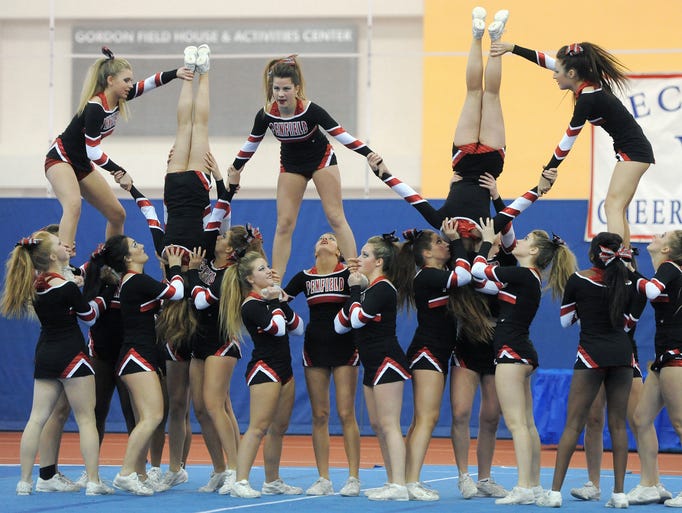 For many students across the country, school is back in session; for others, it's right around the corner. So many of your tweens and teens may be planning to try out for cheerleading this yer--and why not? With all the tumbling, dancing and lifts, it’s an action-packed sport that keeps kids involved in all the major athletic events at their schools.
For many students across the country, school is back in session; for others, it's right around the corner. So many of your tweens and teens may be planning to try out for cheerleading this yer--and why not? With all the tumbling, dancing and lifts, it’s an action-packed sport that keeps kids involved in all the major athletic events at their schools.
Unfortunately, it can also be a very dangerous activity—a recent study showed that in just one year, over 22,000 kids age 5-18 were admitted to hospital for cheer-related injuries. Of those injuries, about 52% were sprains and strains and 16% were fractures, two injuries I see a lot of in my Houston podiatrist office.
In general, these injuries fall into one of two categories: traumatic (your cheerleader falls or steps the wrong way and is immediately hurt) and overuse (doing the same move over and over again at daily or weekly practices results in trauma). With a traumatic injury, you’ll know right away what caused the ankle sprain or foot fracture; with an overuse injury, no one problem can be blamed for your child’s stress fracture—it will have been caused by a series of events that finally proved too much for delicate foot or ankle bones. Achilles tendonitis (inflammation of the Achilles tendon) is also a common overuse injury seen in cheerleaders.
Clearly, cheerleading can be a dangerous sport, but don’t panic just yet—there are ways to protect your young athlete. Traumatic injuries are hard to predict, but having great coaches on hand at all times kids are practicing and ensuring cheerleaders always work with spotters goes a long way towards preventing injuries.
Overuse problems are easier to fight; a three-pronged approach is the way to go.
- Train properly—begin slowly and progress gradually (don’t try to do a triple-back-handspring your first day on the team)
- Improve your strength—muscular imbalances can lead to one part of the body overcompensating for a weaker spot, causing undue trauma to that area. Avoid this problem with strength conditioning involving low weights and high reps. Be sure to note that kids under 14 shouldn’t use free weights and should only do strengthening exercises that involve their own body weight.
- Improve flexibility—tight muscles are muscles that are more vulnerable. Make sure kids stretch before and after practice and work on stretching in between practices as well.
As with any sport, cheerleaders can be vulnerable to athletic injuries. If your cheerleader experiences any discomfort during or after practices, schedule an appointment with Dr. Andrew Schneider to rule out any of the problems we’ve just discussed.

